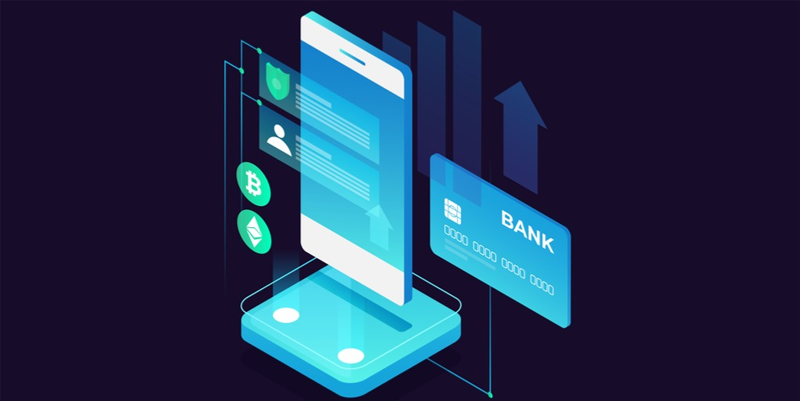In a rapidly digitizing world, it’s more important than ever for businesses to keep up with the latest technologies and trends including the banking industry. In recent years, many banks have adopted new technologies like mobile banking, cloud computing, and artificial intelligence in the workflow to adapt in order to remain competitive. These initiatives have allowed banks to improve the customer experience, increase operational efficiency, and enter new markets.
In this post, we’ll define all about digital transformation in banking, outline the different types of transformations and provide tips for getting your own transformation underway. Let’s get started.
Table of Contents
What is Digital Transformation in Banking
The banking sector has been one of the most resistant to change when it comes to digitization. In the past, this was understandable given the sensitivity of banking services and the need for in-person interactions for things like opening an account or taking out a loan. However, in recent years there has been a shift in customer expectations and behavior, with more and more people carrying out their banking transactions online or through mobile apps. As a result, banks have had to adapt or risk being left behind.

This process of digital transformation in banking has been ongoing for several years now, and it shows no signs of slowing down. Banks are constantly having to update their systems and processes in order to keep up with the latest technology trends. In addition, they are under pressure to provide a seamless customer experience across all channels, whether that’s in-person, online, or through a mobile app. The good news is that, despite the challenges, banks are beginning to embrace digital transformation and are reaping the benefits in terms of increased customer satisfaction and loyalty.
Benefits of Digitalization in Banking Industry
Digital transformation banking brings a number of advantages for both banks and their customers. Below are some of the best its advantages:
Cost savings
Traditional banks have long relied on a complex system of checks and balances to process transactions and manage accounts. However, this system is inefficient and costly, and it can leave banks vulnerable to financial errors. Digital banking software offers a more efficient alternative by automating many of the processes involved in transactions. This automation can significantly reduce the time and resources required to process transactions, minimizing the risk of costly mistakes. In addition, digital banking systems provide real-time visibility into account activity, making it easier for banks to identify and prevent fraud. As a result, digitization can help banks to improve their bottom line by reducing operating costs and enhancing security.
Improved usability
ID verification systems and risk assessments are two of the most important features of digital banking. They enable banks to serve customers quickly and easily, allowing people who are not bank customers to access financial services.
A major advantage of digital banking is that it is available 24/7. This means that customers can carry out any transaction from anywhere and access a wide range of services. Another advantage is that digital banks can offer lower fees and interest rates than traditional banks. This is because they don’t have the same overheads, such as branches and staff. Digital banking is also more convenient for people who live in remote areas or who travel frequently.
Greater personalization
Digital banking software enables sophisticated personalization strategies powered by artificial intelligence (AI) and machine learning (ML). Banks can offer customers relevant financial options, interactive tools, and educational resources at the right time. Automated budgeting, spending analytics, savings reminders, and many other tools help inform and engage customers.
For example, a customer who is frequently overdrawing their checking account may be offered educational resources on saving money, while a customer who meets certain criteria may be marketed a new credit card with rewards. Digital banking software helps banks to create personalized experiences for their customers that can improve financial health and build trust and loyalty.
Wow-features
In the past, banks and other financial institutions have been slow to adopt new technologies. This has changed in recent years, as established banks have been forced to compete with a new wave of digital-only banks. These digital banks already have many features that established banks simply cannot offer, such as buying cryptocurrencies and gold or investing in stock markets directly in the banking app. Digital banking customers can instantly change their security settings, and transaction limits, and even specify whether or not they want to enable NFC or magnetic stripe payments. As a result, traditional banks are being forced to evolve in order to stay relevant. It will be interesting to see what new features and services they come up with in the coming years.
Categories of Digital Transformation in Banking
There are a few different types of digital banks. Here are the main types of digital banks:
Neobank

A neobank is a digital bank that offers its customers remote access to its services via a mobile app. While many traditional banks have an online presence, neobanks are entirely online, without any physical offices. This allows them to offer their customers more affordable rates and fees, as well as greater convenience and flexibility.
Compared to traditional banks, neobanks often have a narrower range of services. However, this is changing as more and more Neobanks obtain bank licenses of their own. In addition, many Neobanks partner with existing banks for bank-licensed operations, which gives their customers access to a wider range of services.
Challenger Bank

Challenger banks are a type of financial institution that has emerged in response to the challenges posed by traditional banks. Unlike traditional banks, challenger banks are typically more user-friendly and cost-effective, with a focus on underserved audience segments. The term “challenger bank” originated in the United Kingdom, where a number of these institutions have been established in recent years. Challenger banks have gained popularity in other countries as well, as they offer an alternative to traditional banking that is more tailored to modern needs. While challenger banks are still a relatively new phenomenon, they are quickly making their mark on the banking industry and are poised to become a major force in the years to come.
New Bank

These are fully regulated neobanks that offer a full spectrum of banking services; the only difference between them and traditional banks is the manner in which they conduct business, which is entirely digital. These new financial institutions include Revolut, Monzo, N26, and Starling Bank as some examples.
NonBank

There has been a recent rise in the number of nonbank financial institutions, which provide financial services such as loans and mortgages without also offering checking and savings accounts. These institutions have been able to fill a need for streamlined financial services that traditional banks have not been able to meet. In addition, these nonbanks are often more flexible than banks and can offer more personalized services. As a result, they have become a popular choice for many consumers. However, it is important to research any nonbank before using their services, as not all of them are regulated in the same way as banks.
Tips for successful Digital Transformation in Banking Successfully
Enhance Consumer Experiences
In order to deliver satisfactory services, it is important to understand customer expectations and work accordingly. In the present scenario, customers are looking for seamless delivery of services, personalized product experience, transparency, and security. Hence, it has become imperative for organizations to adopt a ‘customer-first’ approach. This would involve bringing about a change in operating procedures, introducing digital platforms in service offerings, enhancing customer interaction procedures, and so on. By making these changes, businesses can stay ahead of the competition and create a loyal customer base.
Improve skill set
According to the World Economic Forum’s report, more than 55% of finance sector employees will need to upgrade their skill set to fulfill existing and changing operational demands. The drive for an improved skill set will require necessary investment for change in operating culture, thinking patterns, the culture of learning, skillset training, and more across the teams.
In order to stay competitive, it is essential that finance sector employees have the necessary skills and knowledge to meet the demands of the industry. The good news is that with the right investment, finance sector employees can easily upgrade their skills and be well-prepared for the future. By investing in education and training, as well as developing a culture of learning within the organization, finance sector employees can ensure that they have the skills required to meet the needs of the future.
Leverage Modern Technologies
In order to remain competitive in the banking industry, it is essential to embrace new technologies. This is because the playing field has changed due to new competitors and a greater awareness by consumers of what is possible. For example, consumers can now order meals from a voice device, engage with others with video, hail a cab with their phone, and get a home loan in minutes. As a result, banks need to adopt technologies such as mobile apps, cloud computing, automation and AI, voice technologies, the Internet of Things (IoT), blockchain, and 5G in order to remain competitive. By doing so, they will be able to offer their customers the same convenience and flexibility that they have come to expect from other industries.
Modernize infrastructure
The underlying infrastructure has a crucial role in facilitating the information flow that is key to the frontend digital operations. So, it’s important to modernize your legacy infrastructure to support digital platforms. A microservice architecture breaks up an application into small, independent services that can be developed, deployed, and scaled independently. This approach can be helpful in reducing development costs and time-to-market for new features.
In addition, APIs allow different applications to communicate with each other, exchange data, and integrate functionality. DevOps is a set of practices that automates and accelerates the software development process, resulting in shorter release cycles. Overall, By modernizing the underlying infrastructure and adopting these approaches, organizations can make their digital transformation journey smoother and more successful.
Operating Model
Today customers are looking for a hybrid experience that combines the convenience and speed of digital with the personal look and feel of the product. This is possible by transforming businesses into three different operations models:
- Digital as Business: Businesses can manage their digital activities at the management level
- Digital as New Line of Business: It transforms businesses into a separate digital division that focuses on digital activities
- Digital Native: A new setup that uses its own technology stack to focus directly on customers
Each of these models has its own advantages and disadvantages, but by understanding these models, businesses can be more flexible in how they operate and provide a better overall experience for their customers.
Completely Digital-driven
You need to make sure you have the right culture in place to support your transformation. This means creating an environment that encourages innovation and empowers employees to experiment with new ideas. It’s also critical to have the right skill set on board. Make sure your team has the necessary expertise to drive change and implement new technologies. Finally, you need to ensure you have enough funding in place to support your transformation journey. By taking this holistic approach, you can set your organization up for success and ensure that all the necessary components are in place for a successful digital journey.
Continuous Improvement
A key factor in achieving continuous improvement is a seamless innovation delivery pipeline built on agile principles. The pipeline should be effective and able to easily track changing market trends, test innovative products and facilitate fast feedback mechanisms to iterate products for enhancements. This cycle naturally contributes to on-demand service delivery, continuous innovation, and continuous improvement, resulting in accelerated time-to-market.
Such a pipeline is necessary in order to stay ahead of the competition and maintain a high level of customer satisfaction. It is also important to have a clear understanding of what customers want and need in order to develop products that they will actually use. Only by constantly innovating and improving upon existing products and services can businesses hope to remain successful in the long run.
In conclusion
This digital transformation in banking has been driven by advances in technology, and it has had a profound impact on banks of all sizes. In order to stay competitive, banks are scrambling to adopt new technologies and services. This can be a challenge for businesses of all sizes, but that’s where Magenest comes in. We are a company that specializes in helping businesses with their digital transformation. We will work with you to understand your goals and needs, and then we will provide the best solution to help you achieve them. Contact us today to learn more about how we can help you digitize your banking operations.











